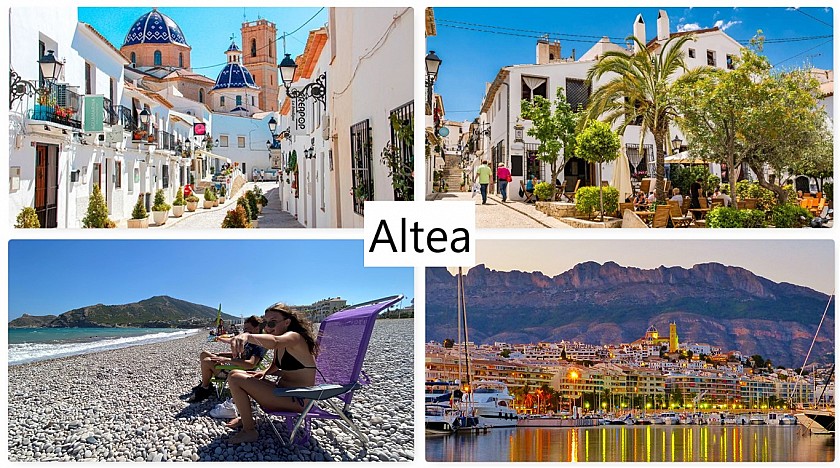

Population:
21.995 (2018)
Flag:
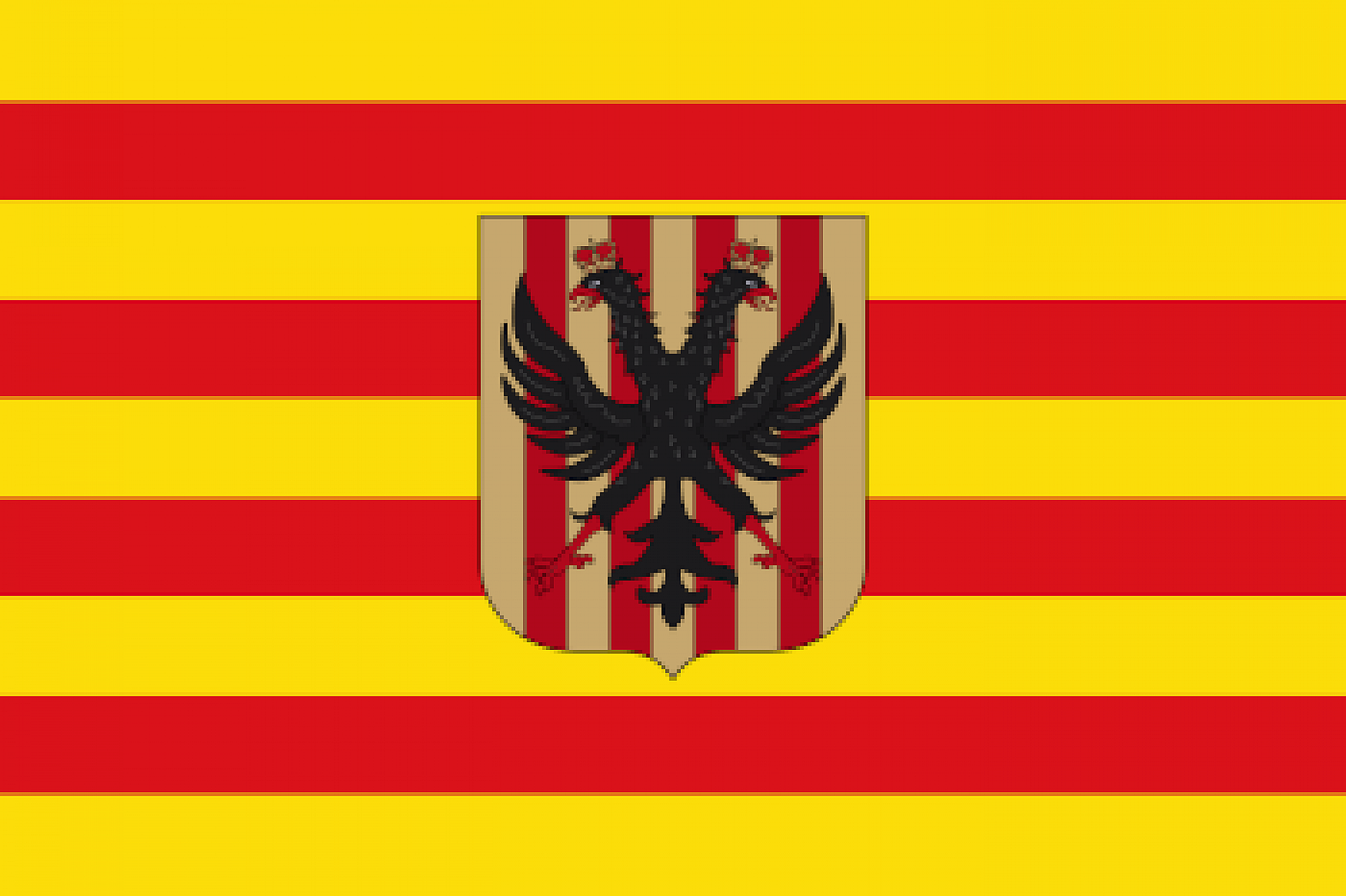
Watch:
Video Altea
Location: coast
Benidorm: 8km
Airport Alicante: 65 km
Torrevieja: 120 km
Altea in a nutshell:
The well-known Spanish writer Gabriel Miro once described Altea as 'a village scorched by the sun'. His lyrical words and those of many others characterize the appeal of the town because of its privileged location in the middle of a bay. Especially in the 1960s and 1970s, Altea worked as a magnet for artists such as painters, sculptors, writers, photographers and musicians. They saw Altea with its rustic old center on the hill as the ideal place to fully enjoy their Bohemian way of life.
A lot has changed since then, but a striking amount has remained virtually the same. The luxury residential areas such as Altea Hills are new. Another class of visitors arrived over the years in search of a pleasant way of life under the almost constant shining sun. But that does not mean that Altea still exudes the atmosphere and personality of a village: quiet, relaxed and rooted in a rich fishing history. And art and culture are still of paramount importance to the city. If you look at the packed, annually recurring event calendar, you will know how emphatically cultural life is anchored in daily life in this part of the Costa Blanca. It is not without reason that Altea has proclaimed itself 'the cultural capital of the Costa Blanca' without any false modesty.

One of the most surprising things about Altea is the variation in the landscape. The high cliffs are visible from the coastline. On the north side one can see how the Sierra Bernia mountain leads to the coast and on the south side the Sierra Gelada looms. Together they close the bay with the lighthouse of Altea as a striking beacon. The waterfront is interrupted in some places by natural obstacles. The larger and busier beaches are La Olla and Cap Negret. Closer to the center are the Roda and the Cap Blanch beach. Just before the busy beaches are two small islands with two curious names: Llleta and L'lllot.
The short distance of only 8 kilometers from Benidorm also adds to the appeal of Altea. Visitors and home buyers have both peace and bustle at their fingertips. In addition to the facilities in the tourist metropolis of Benidorm, Altea also has a variety of amusement and theme parks a few kilometers from the town.
No visit to Altea is complete without a visit to the old town on the hill. This historic section is the heart and soul of the community for several reasons. Without its strategic position against pirate attacks, Altea's history after the 16th century would undoubtedly have taken a completely different turn. And it was also the old town, which enabled its current status as the cultural capital of the Costa Blanca. Without the hard-to-resist lure of the old town, Altea would never have been able to achieve such a healthy cultural climate.
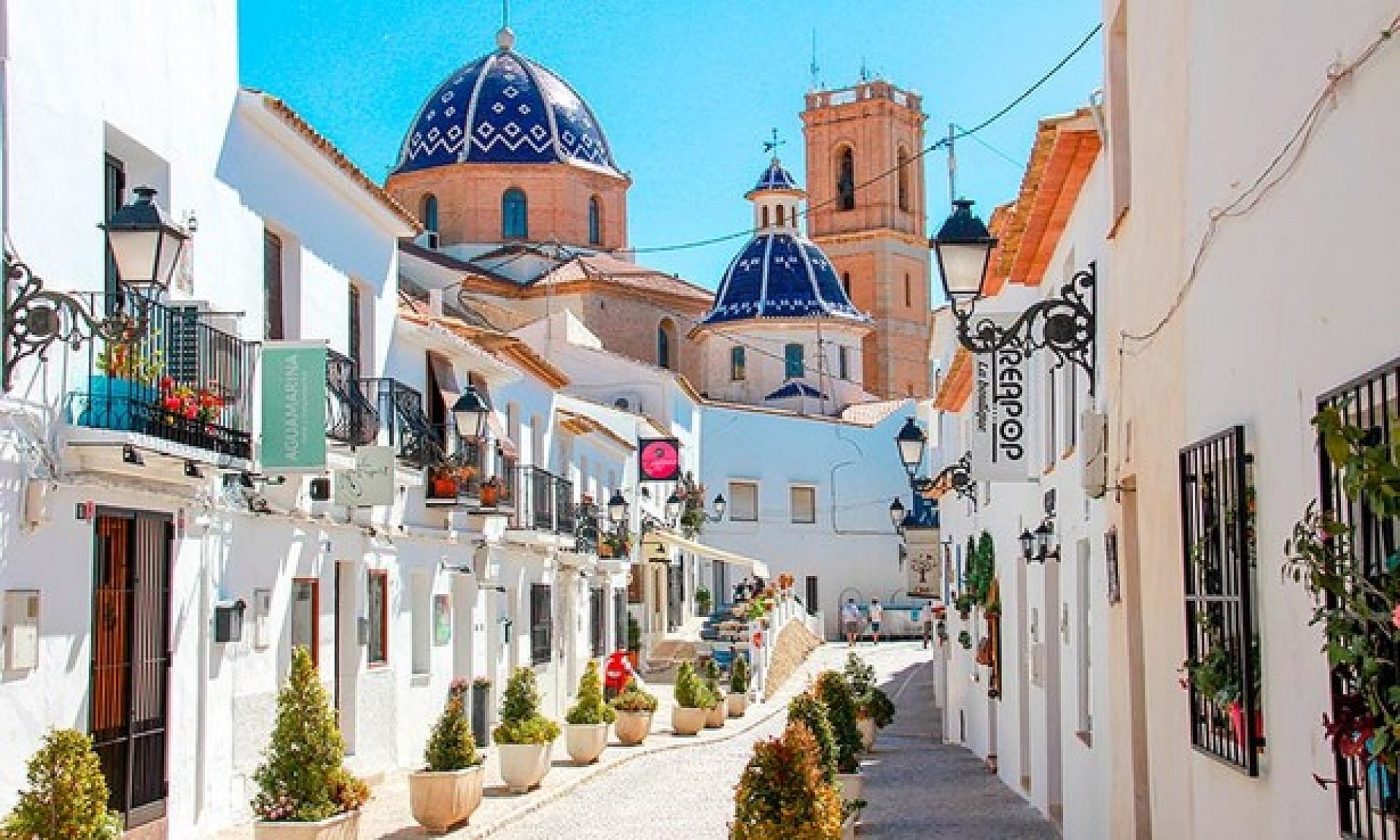
What makes old Altea so special? Well, it exudes charm squared. The progress of time has hardly taken hold of this part of the Costa Blanca. The whitewashed houses along narrow cobbled streets still glisten in the sun as cheerfully as they did centuries ago.
A long walk is required to reach the old town. The beginning is in the Plaza del Convent near the N-332 coast road. At the square is the San Francisco church, an old Franciscan monastery. Then it is time to take the first of 255 wooden steps. On the route to the top, there are several moments to enjoy the beautiful views of the Mediterranean and the hills, such as the cozy Plaza de la Cruz square. The walkers' efforts are further enhanced by the tour of the white houses, which are usually brightened with many flowers.

The real reward awaits at the top where everything that makes the old city so special comes together. Most eye-catching, and visible from afar, is the Virgin del Consuelo church with a dome of blue and white tiles. The church is located in the Plaza de la Iglesia, which is lined with small shops, art galleries and restaurants. In the past there were defensive walls to protect against pirate attacks. Two of the three gates from that time can still be admired. But it is mainly the beautiful, wide views that make a visit to the highest point of Altea's old town so popular.
Half a century after artistic types saw Altea and its protected location in a bay as an important source of inspiration for their creativity, the town still retains the aura of a paradise for art expressions. The Palau Altea in the old town, with a capacity of 1,000 seats, is an important venue for concerts, theater productions, ballet performances and exhibitions throughout the year. The already lively art world with its many galleries, the jewelers, painters, photographers and sculptors received an extra boost a few ago when the University of Elche in Altea set up an annex for its art studies. That attracted even more artistic youngsters to the city. The future of Altea as the cultural capital of the Costa Blanca thus seems guaranteed. Here is a brief summary of some of the annual cultural events.
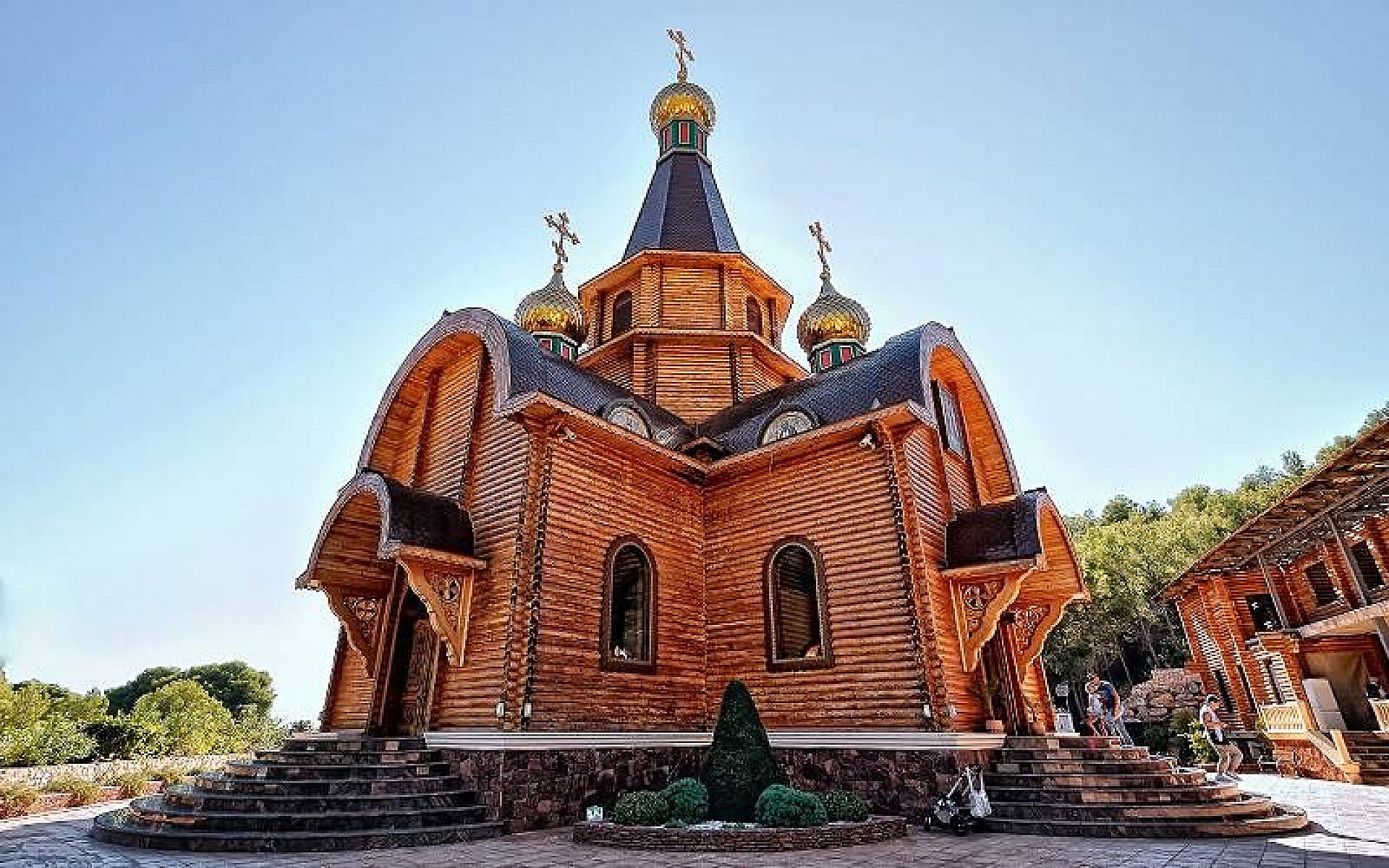
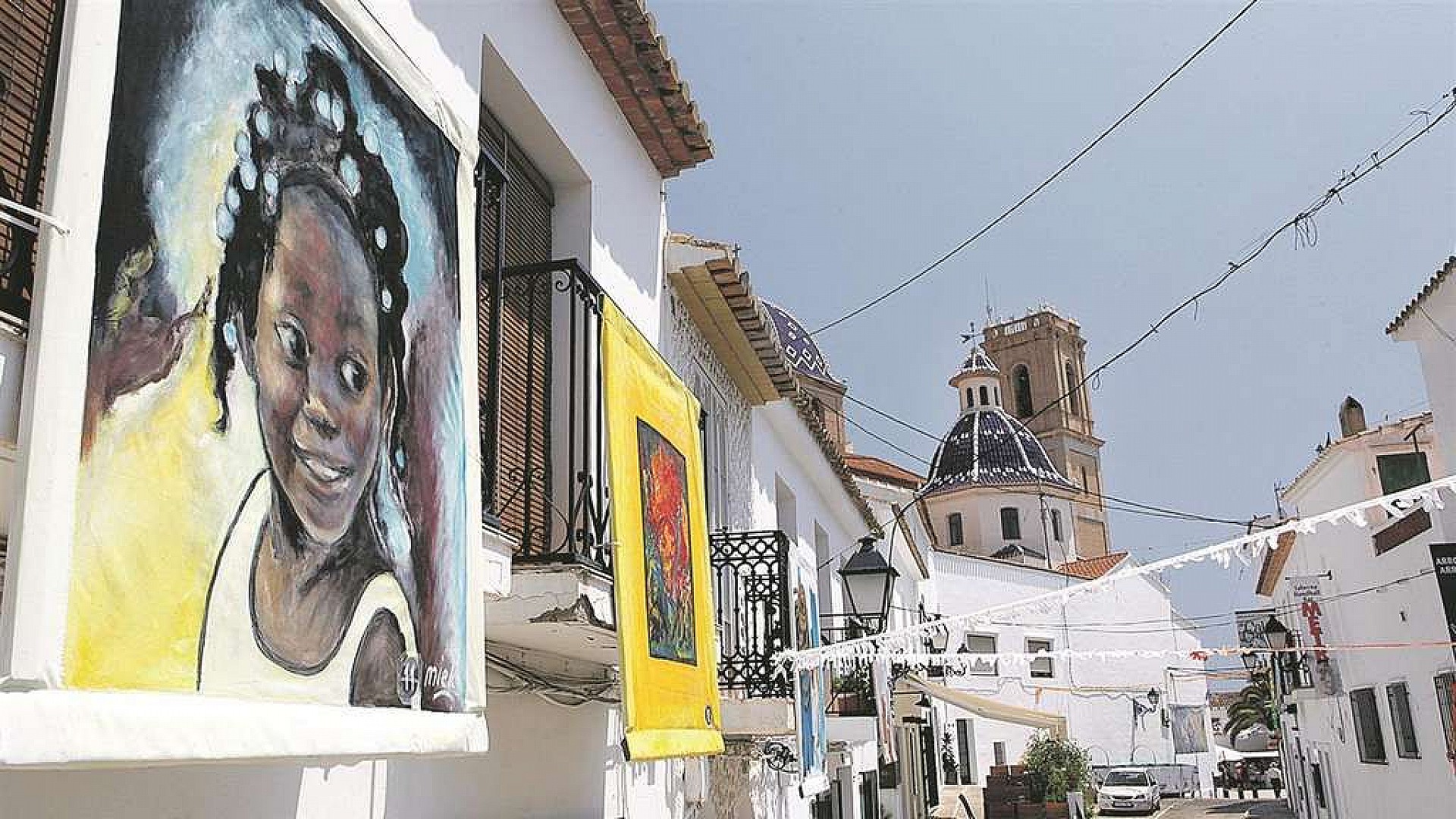
In Altea they know what partying is. The annual calendar is packed with the most diverse festive activities. Some of these are variations of festivals, which are celebrated every year in many places along the coast. But quite a few are unique to Altea. Here is a selection of the festivities.
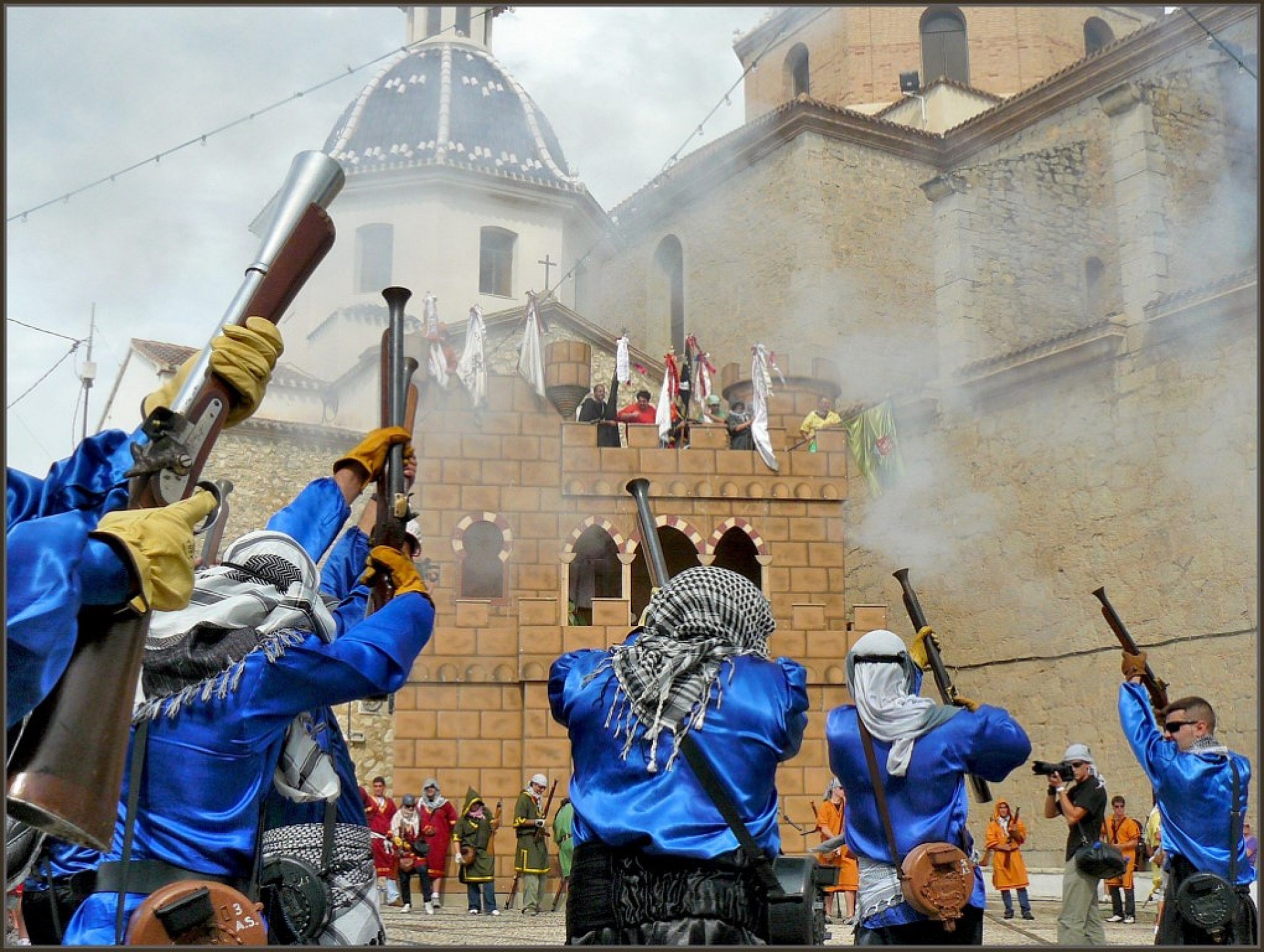
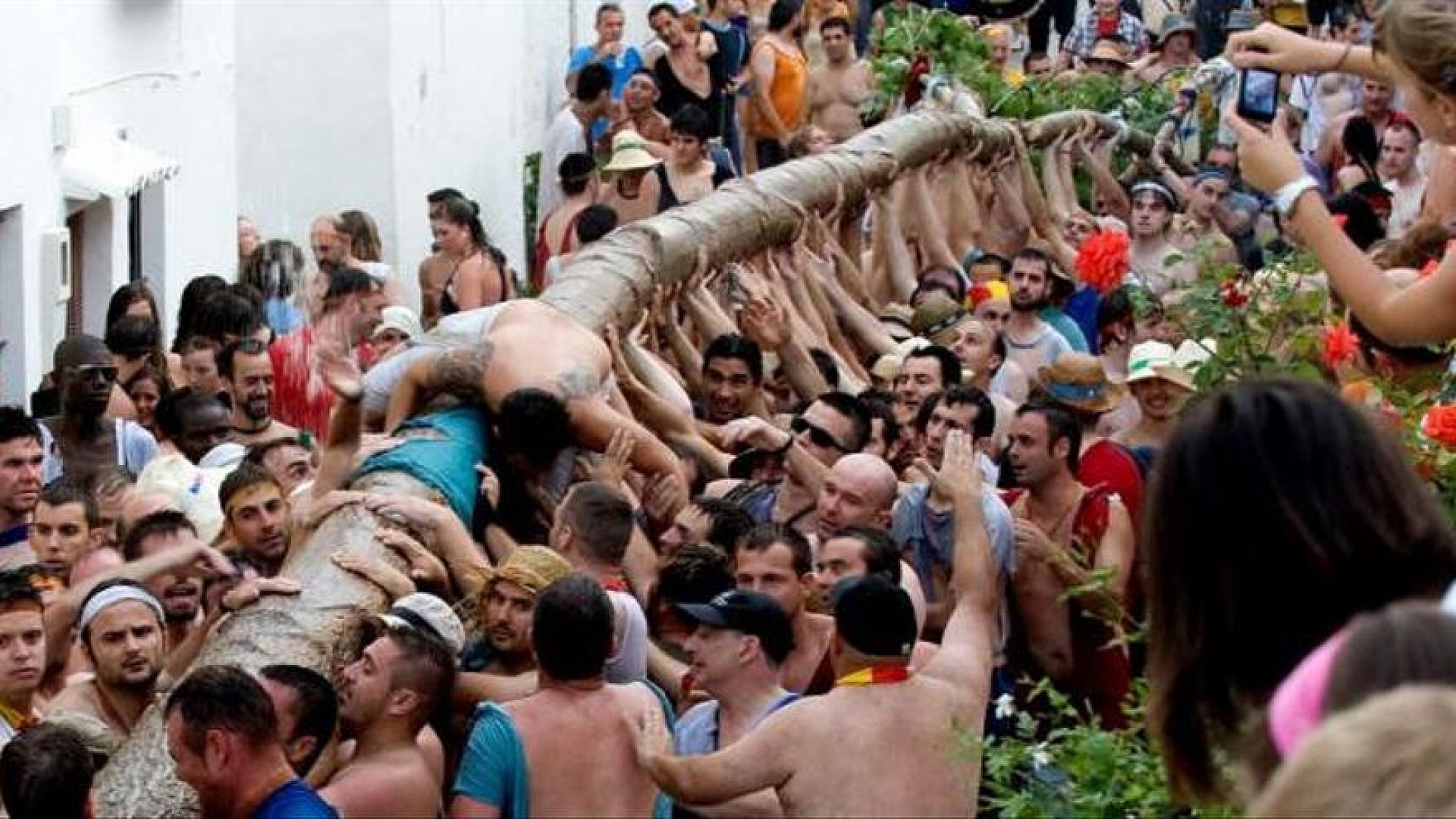
The Mediterranean Sea plays a prominent role in the sporting life in Altea. Altea offers almost ideal conditions for a range of water sports. It owes the protection of the Sierra Gelada Natural Park to the presence of several beautiful routes for diving or snorkeling. The mouth of the Algar river at the Cap Negret beach provides perfect conditions for kite surfing.
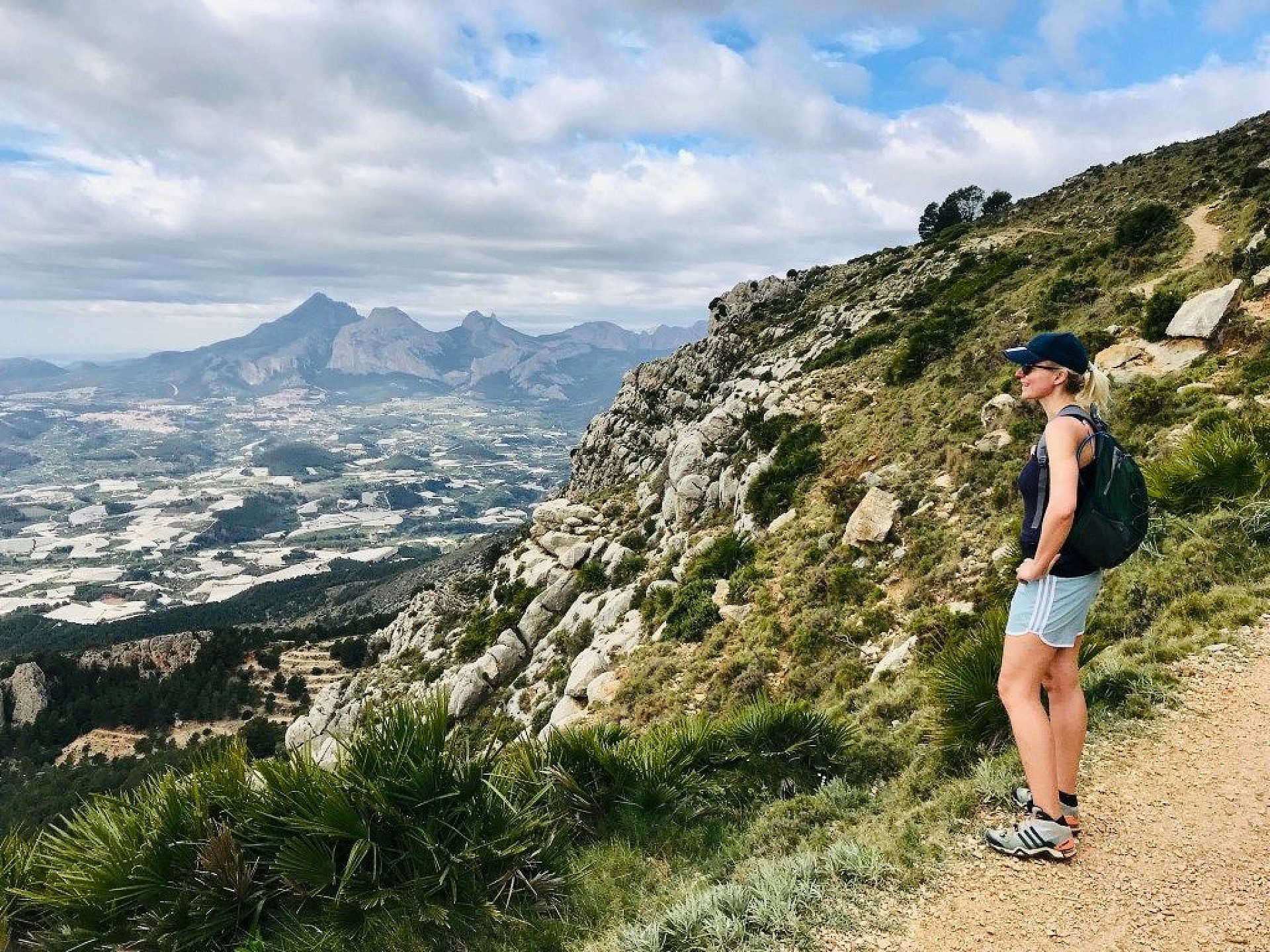
Since Altea is blessed with a predominantly moderate wind force due to its location in a bay, sailing enthusiasts will also find excellent conditions for practicing their hobby. Altea therefore has several sailing schools where beginners can become proficient in the sport. In addition, the city attracts many fans of sports such as: kayaking, rowing, windsurfing, water skiing, flyboarding, canoeing and paddle boarding.
The favorable conditions for sailors make Altea the most important sailing event on the Mediterranean. The annual race from Altea to Ibiza and back to Altea attracts large crowds in February. This also applies to the Flying Dutchman World Championships in September and the battle for the Pata Negra sailing trophy, which is scheduled for December. Swimmers will battle it out for the top prize of the Coast Altea swimming competition in May.
Adventurous hikers have several options for attractive tours. In the Bernia hills near the large urbanization Altea Hills, a track has been mapped out that takes you past the historic Fort Bernia and old rock paintings of the Vicari Hermitage. Another route runs from Altea la Vella to Pinos. Those who want to enjoy the countryside around the city can choose from one of five signposted routes, which are suitable for both walkers and cyclists. Or go for a walk along the banks of the Algar River and enjoy the diversity that flora and fauna have to offer.
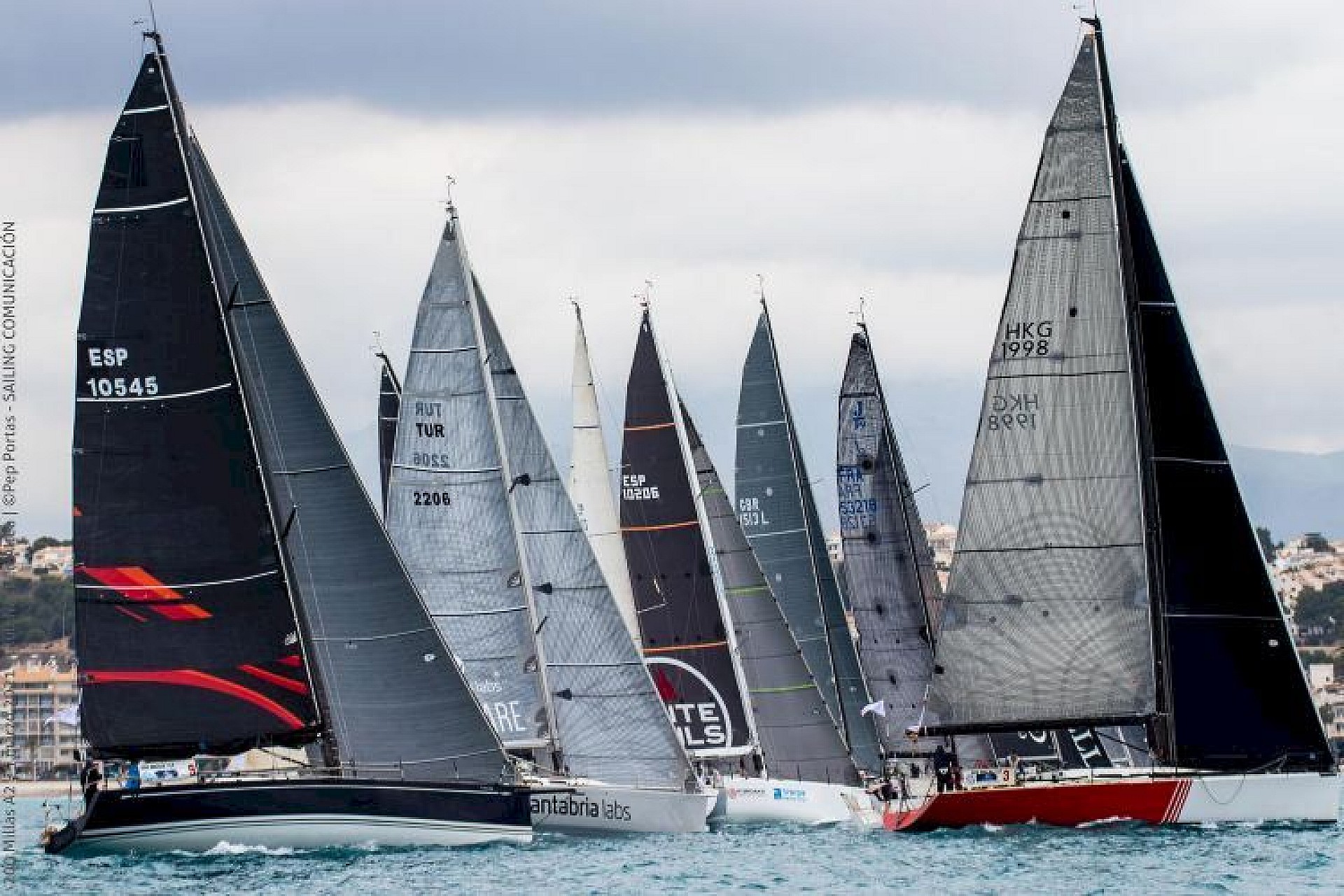
With the slogan 'Altea cycling destination', the city has included information about ten cycling routes in its tourist brochure. There is a choice of short trips of around 20 kilometers or a more challenging trip on the pedals of 145 kilometers. The brochure offers options for downloading detailed information for all routes.
Golf enthusiasts can head to the Altea Club de Golf at the foot of the Sierra de Bernia hills. This 9-hole course has its own golf academy and some petanque courses. There are also several other golf courses in the immediate vicinity. For more information about this visit our Benidorm page.
For those who want to escape the charm of Altea, the immediate area has plenty to offer. The central location, 8 kilometers from bustling Benidorm and 12 kilometers from the seaside resort of Calpe with its eye-catching Calpe Rock, makes it easy to soak up a different atmosphere close by.
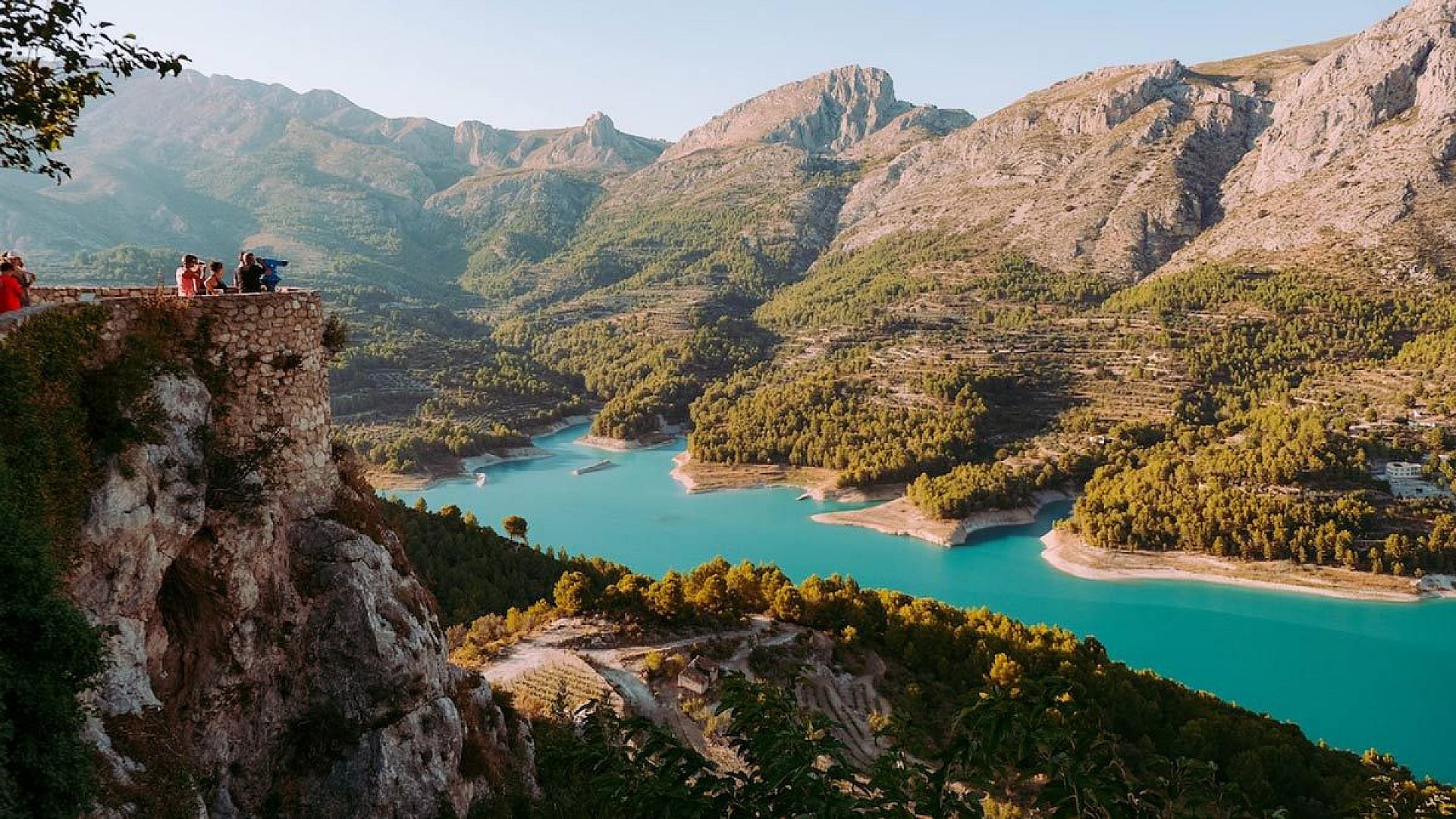
A popular day trip (organized or not) is to the mountain village of Guadalest in combination with a visit to the Algar waterfalls. Guadalest is the most visited village in Spain. It is located 20 kilometers from Altea. Thanks to its unique location on a small mountain, Guadalest can only be reached via a tunnel. It is best known for the castle in the originally Moorish town. But the narrow winding streets and the various small museums also attract a large audience. The Algar waterfalls are located 10 kilometers inland from Altea. At the source of the river Algar is a nature reserve with waterfalls, natural pools and a walking area with a botanical garden and aromatic plants.
Ten kilometers inland is Polop, nicknamed the 'oasis of the Costa Blanca'. It owes this to the Plaza de los Chorros, where water comes out of the wall at 221 places. Many visitors take the pleasant walk to the top of the hill where Polop Castle once stood. That no longer exists, but instead there are beautiful views of the area.
For a more challenging climb, you can travel to Finestrat, 20 kilometers from Altea. In this town with a small but interesting old center, the more than 1,400 meters high Puig Campana can be climbed, the highest mountain in the region.
Calpe, 11 kilometers from Altea, is especially famous for the Calpe Rock. The city is also known for its fish market, many ancient monuments such as the Queen's baths and the promenades along the Mediterranean.
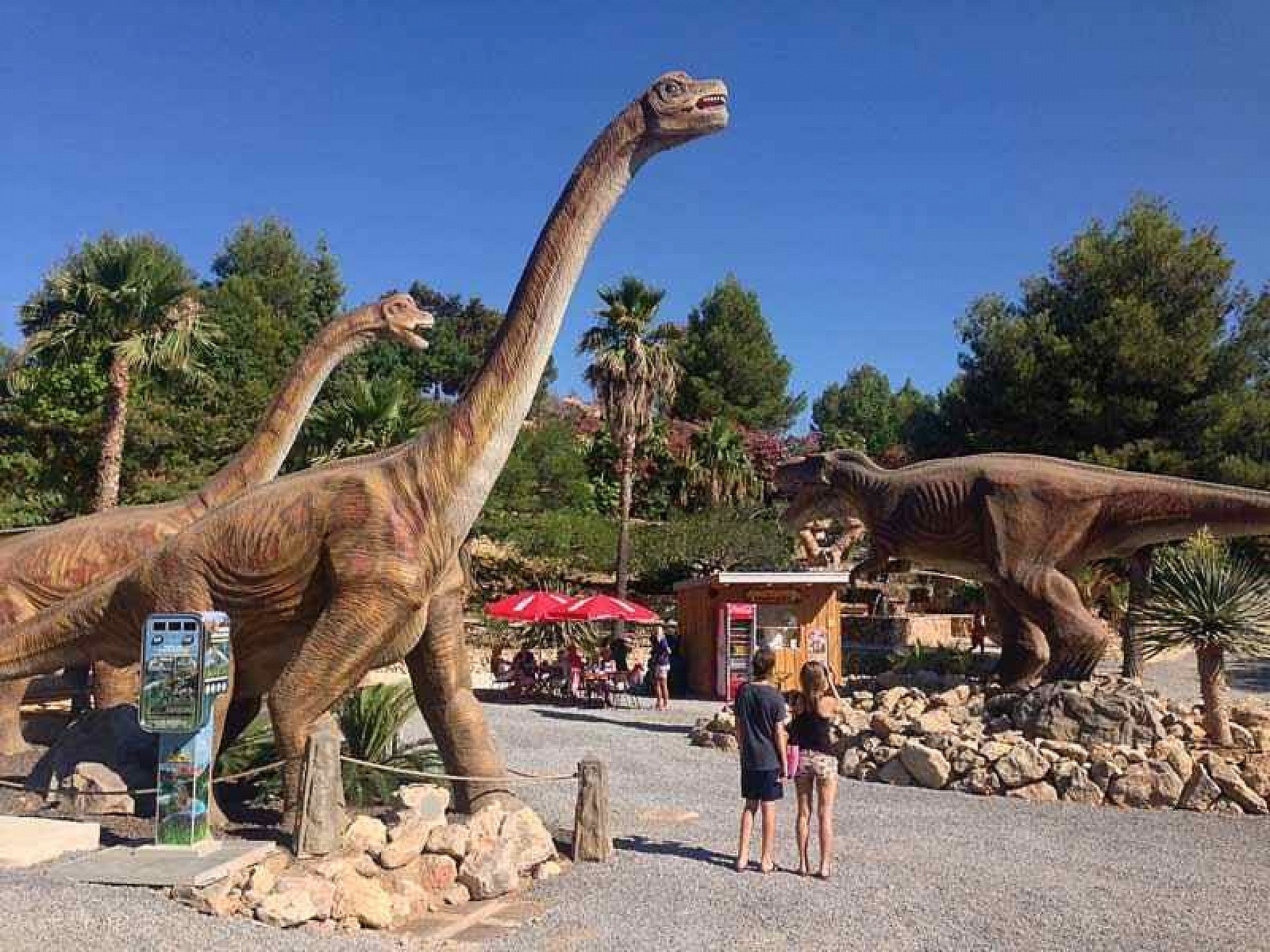
The town of Villajoyosa, 21 kilometers south of Altea, is known for its multi-colored houses on the waterfront. Many people also visit the factory and the museum of the Valor chocolate factory here. Valor is the most sold chocolate brand in Spain.
If you want to go out with the whole family, there is a choice of various theme parks in the immediate vicinity. Thanks to the popularity of the tourist city of Benidorm, there are two water parks (Aqualandia and Aquanatura), two animal parks (Terra Natura and Mundomar), the amusement park Terra Mitica and the Dino Park.
For more information about these and other day trips or trips in the northern Costa Blanca, see our Benidorm page.